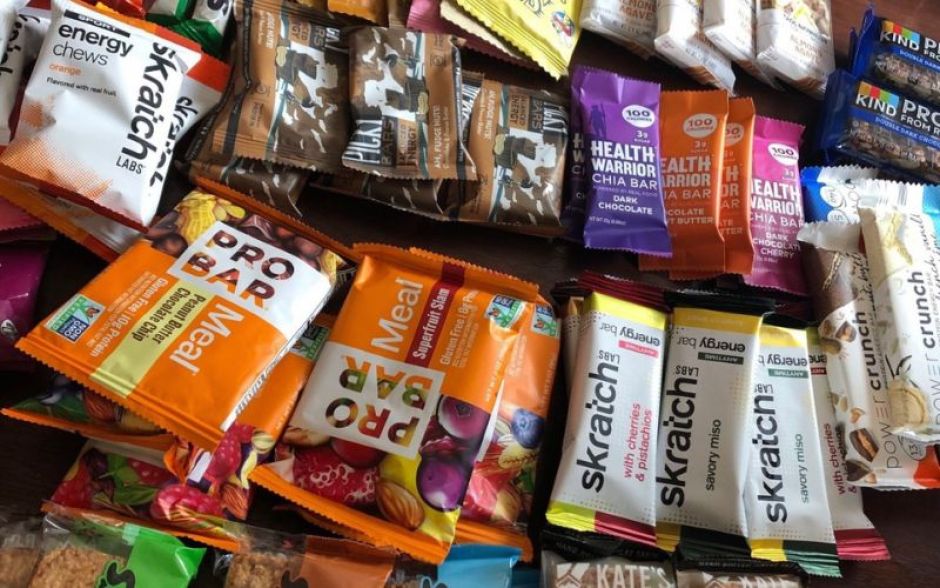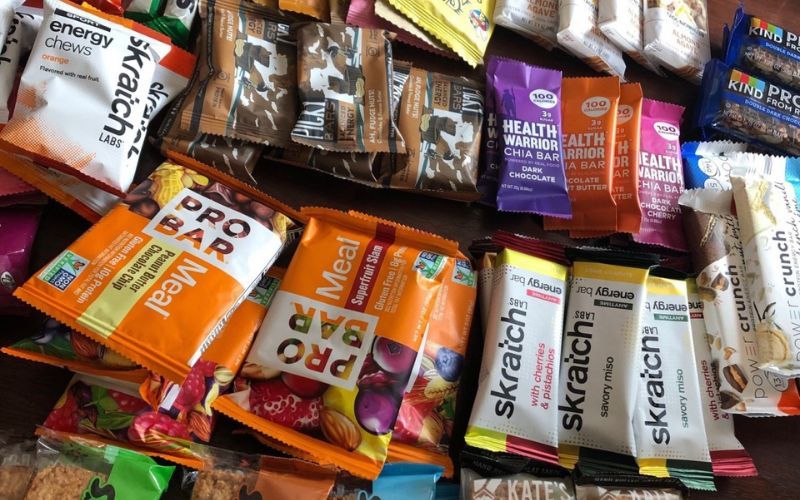
Energy Bars and Gels : Powering Super Performance on the Go 2023
In the dynamic realm of endurance sports and strenuous activities, Energy Bars and Gels have emerged as quintessential allies. These compact, nutrient-dense powerhouses have been meticulously engineered to cater to the nutritional needs of athletes, adventurers, and fitness enthusiasts, ensuring that energy depletion is never a hindrance in their pursuits. As the realm of nutrition science evolves, so does the complexity and efficacy of these vital supplements. This comprehensive insight delves deep into the world of Energy Bars and Gels, casting light on their history, the science behind them, their varied compositions, and their role in contemporary athletic and fitness narratives.

Table of Contents
Historical Context: The Genesis of Compact Energy – Energy Bars and Gels
Long before the commercialization of Energy Bars and Gels, ancient civilizations recognized the value of portable energy sources. From the Roman Legions consuming dense bread and dried fruits during campaigns to Native American tribes relying on Pemmican – a mix of fat, protein, and berries – the concept of compact energy is far from new. However, the modern, sophisticated iterations we see today began their journey in the mid-20th century, responding to the increasing demands of endurance sports.

The Science Behind the Energy: Macronutrients Unveiled – Energy Bars and Gels
At the heart of Energy Bars and Gels lies a calculated blend of macronutrients, primarily carbohydrates, proteins, and fats. Carbohydrates, easily metabolizable, offer instant energy, making them essential for high-intensity activities. Proteins, on the other hand, aid muscle repair and recovery, while fats serve as a longer-lasting energy reserve. Understanding this macronutrient triad is fundamental to appreciating the formulation of these products.
- Carbohydrates: Often found in the form of sugars, starches, or fibers. They replenish glycogen stores, fueling physical activity.
- Proteins: Essential amino acids that assist in muscle recovery and prevent muscle mass loss during extended workouts.
- Fats: Provide sustained energy, especially vital for longer duration activities where instant energy sources might be depleted.
Energy Bars Vs. Gels: Distinguishing the Duo – Energy Bars and Gels
In the athletic and fitness world, the debate between Energy Bars and Gels is one of nuance and specificity. While both are designed to cater to the nutritional requirements of individuals engaged in physical activities, understanding the intrinsic differences between the two is crucial for optimizing performance and ensuring an effective energy boost. Here’s a deeper look into the characteristics, benefits, and ideal use-cases of each, assisting you in making an informed decision tailored to your needs.
Formulation and Texture
Energy Bars are often formulated to be denser and more substantial. Made from a variety of ingredients such as grains, nuts, dried fruits, and protein powders, they usually possess a chewy or crunchy texture. The combination of these ingredients not only ensures a steady release of energy but also provides essential nutrients and fiber which can be beneficial for gut health.
On the other hand, Energy Gels are viscous, semi-liquid formulations primarily made of simple carbohydrates, allowing them to be absorbed rapidly. Their gel-like consistency ensures that they can be consumed quickly, even during intense physical exertion.
Digestion and Absorption Rate
Given their dense composition, Energy Bars take longer to digest. This slower digestion rate offers a sustained energy release, making bars particularly useful before starting an activity, ensuring prolonged energy availability. The presence of proteins and fats in many bars further slows gastric emptying, making the energy release even more gradual.
Contrastingly, Energy Gels are designed for near-instant energy. Their simple carbohydrate composition ensures rapid absorption into the bloodstream, providing an immediate spike in energy. This makes them especially useful during activities, particularly when one is on the verge of exhaustion and requires a swift energy boost.
Versatility and Flavor Profiles
Energy Bars, given their solid form, allow for a diverse range of flavors and textures. From chocolate-coated bars with crunchy nuts to fruity variants with a soft, chewy center, there’s a wide spectrum available catering to different palates.
Energy Gels, due to their consistency, may have a limited range in terms of texture but make up for it with an array of flavors. From classic fruit flavors to more experimental ones like mocha or salted caramel, there’s no shortage of options for those seeking variety.
Ideal Use Cases
When embarking on extended activities or hikes where breaks are feasible, Energy Bars can be an ideal companion, offering both energy and satiety. Their nutrient profile can help stave off hunger, making them suitable for activities that don’t demand instant bursts of energy.
Conversely, for high-intensity activities like sprinting, cycling, or marathon running where stopping to eat isn’t practical, Energy Gels come to the rescue. They can be consumed on the go, without breaking stride, ensuring that energy levels are consistently replenished.
Ingredients Spotlight: Beyond Macronutrients – Energy Bars and Gels
When discussing Energy Bars and Gels, the conversation often revolves around the macronutrients—carbohydrates, proteins, and fats—that form their foundation. However, to truly understand their nutritional prowess and what sets them apart in the athletic and wellness domains, we must venture beyond these primary components. Delving deeper into the ingredient lists, we encounter a mosaic of micronutrients, adaptogens, and functional compounds that play pivotal roles in enhancing energy, recovery, and overall performance. This section will spotlight some of these unsung heroes, offering insights into their significance.

1. Electrolytes
Critical for maintaining cellular function, electrolytes such as sodium, potassium, and magnesium are often incorporated into Energy Gels. During intense physical activity, the body loses these essential minerals through sweat. Replenishing them ensures optimal muscle function, reduces cramps, and aids in hydration.
2. Amino Acids
Branch chain amino acids (BCAAs) like leucine, isoleucine, and valine might make appearances in both bars and gels. These amino acids help mitigate muscle breakdown during prolonged exertion, foster muscle synthesis, and can provide an alternative energy source when glycogen reserves dwindle.
3. Vitamins
Vitamins, particularly the B-complex ones, are integral for energy metabolism. They assist in converting food into energy, making their inclusion in energy products a strategic move. Vitamin E, an antioxidant, is also sometimes added to quell the oxidative stress that can arise during strenuous workouts.
4. Adaptogens
Modern energy products are increasingly harnessing the power of adaptogens—natural substances known to help the body counteract physical and mental stress. Ingredients like Rhodiola rosea, ashwagandha, and ginseng might be incorporated for their stamina-enhancing, fatigue-reducing, and cognitive function-boosting properties.
5. Natural Sweeteners
Beyond simple sugars, many energy products are now integrating natural sweeteners like stevia, monk fruit, or yacon syrup. These not only provide a pleasing taste profile but can also offer a more steady energy release, avoiding the sharp spikes and crashes associated with refined sugars.
6. Fiber and Prebiotics
While fiber might seem out of place in energy products, certain soluble fibers can offer sustained energy release. They slow the digestion of sugars, providing a gradual energy curve. Moreover, prebiotic fibers foster a healthy gut microbiome, which has indirect benefits for energy and overall wellness.
7. Antioxidants
To counteract the oxidative stress from physical exertion, some energy products incorporate antioxidants sourced from fruits, berries, or botanical extracts. Ingredients like tart cherry, blueberry, or turmeric might be featured for their inflammation-reducing and muscle recovery-aiding properties.
Making the Right Choice: Personalization is Key – Energy Bars and Gels
Navigating the expansive world of Energy Bars and Gels can often feel overwhelming, especially given the multitude of ingredients, flavors, and brand promises crowding the market. However, beneath the cacophony of choices lies a singular truth: no one product fits all. This isn’t merely a marketing statement but a reflection of the diverse needs, preferences, and physiological responses of individuals. Personalization, thus, emerges not as a luxury but a necessity. Here’s why it’s paramount and how you can adeptly tailor your selections.
Understanding Individual Needs
Every person has a unique metabolic rate, nutritional requirement, and threshold for exertion. An endurance runner, for instance, has different caloric and electrolyte needs compared to someone engaging in high-intensity interval training. Recognizing one’s specific needs—whether it’s rapid energy replenishment, sustained release, or muscle recovery support—is the first step in the personalization process.
Taste and Tolerance
While the primary goal of Energy Bars and Gels is functional nutrition, taste can’t be discounted. Enjoying the flavor can motivate consistent consumption, ensuring that one doesn’t skip essential energy boosts. Additionally, gastrointestinal tolerance is crucial. Some might find certain ingredients—like specific sugars or fibers—upsetting to their stomach, making it essential to choose products that align with one’s digestive comfort.
Dietary Preferences and Restrictions
With rising awareness about food sources and dietary choices, many consumers are seeking products that align with their values and health priorities. Whether it’s a preference for vegan, gluten-free, organic, or non-GMO products, personalizing based on these criteria ensures alignment with one’s broader lifestyle and dietary philosophy.
Activity Timing and Duration
The timing and duration of the activity play a significant role in selecting the right product. Someone looking for a quick energy surge before a short workout might gravitate towards a gel, while an individual embarking on a long trek could prefer a bar for its satiety and sustained energy release.
Feedback and Iteration
Personalization is not a one-off event. It requires paying attention to one’s body, gauging performance, and understanding how different products impact energy levels, recovery, and overall well-being. Regularly assessing and iterating based on feedback ensures that the chosen products continue to serve evolving needs and preferences.
Evolving Trends: Sustainability and Clean Nutrition – Energy Bars and Gels
As society’s collective consciousness shifts towards responsible consumption and an unwavering focus on health, the world of Energy Bars and Gels is not left untouched. The wave of sustainable practices coupled with a demand for clean nutrition has revolutionized product formulations, packaging decisions, and brand philosophies. But what does this amalgamation of sustainability and clean nutrition truly entail, and why is it becoming the cornerstone of modern nutritional choices?
The Clean Nutrition Revolution
Clean nutrition is not merely a buzzword but a holistic approach towards understanding and consuming food.
- Transparency in Ingredients: Modern consumers no longer accept obscure ingredient lists. They demand transparency, preferring products that feature whole, recognizable ingredients over synthetic, lab-created compounds.
- Minimizing Additives: Clean nutrition means doing away with unnecessary fillers, artificial colors, flavors, or sweeteners. The focus is on natural, minimally processed components that deliver authentic taste and genuine health benefits.
- Nutritional Density: It’s not just about calorie-counting. Clean nutrition emphasizes the quality of calories consumed—prioritizing nutrient-dense ingredients that provide a plethora of vitamins, minerals, and antioxidants.
Sustainability: Beyond Just Packaging
Sustainability in the context of Energy Bars and Gels goes far beyond using recyclable wrappers.
- Ethical Sourcing: Brands are now taking responsibility for their supply chains, ensuring that ingredients are sourced ethically, with fair wages and practices, and minimal environmental impact.
- Carbon Footprint: From production to transportation, there’s an active effort to minimize carbon emissions, with many companies even aiming for carbon neutrality.
- Waste Reduction: Efforts extend to reducing waste in the production process, ensuring that water usage is minimal, and adopting packaging that is either recyclable or biodegradable.
Consumer’s Role in Driving Change
The market’s evolution towards sustainability and clean nutrition isn’t purely a top-down approach. A substantial driving force is the educated consumer who, equipped with information and a heightened sense of responsibility, demands better products. They are ready to patronize brands that align with their values, even willing to pay a premium for products that stand for sustainability and clean nutrition.
Future Implications
The intertwining of sustainability and clean nutrition suggests a promising trajectory for the Energy Bars and Gels sector. Brands will not only be assessed by the energy boost they provide but by the holistic value they bring to the table: their impact on health, society, and the planet. As research continues to deepen our understanding of nutrition and environmental science, this fusion is expected to yield products that are not just better for individual consumers but for global communities and ecosystems.
Conclusion – Energy Bars and Gels
Energy Bars and Gels, once niche products in the athletic domain, have transitioned into mainstream consciousness, epitomizing the synergy of science and nutrition. As they continue to evolve, reflecting the complexities of modern sports nutrition, their role remains unchallenged: to fuel, sustain, and optimize human performance in the face of physical challenges. Whether you’re an elite athlete or someone seeking an energy boost in daily life, understanding and integrating these powerhouses can make a tangible difference.



